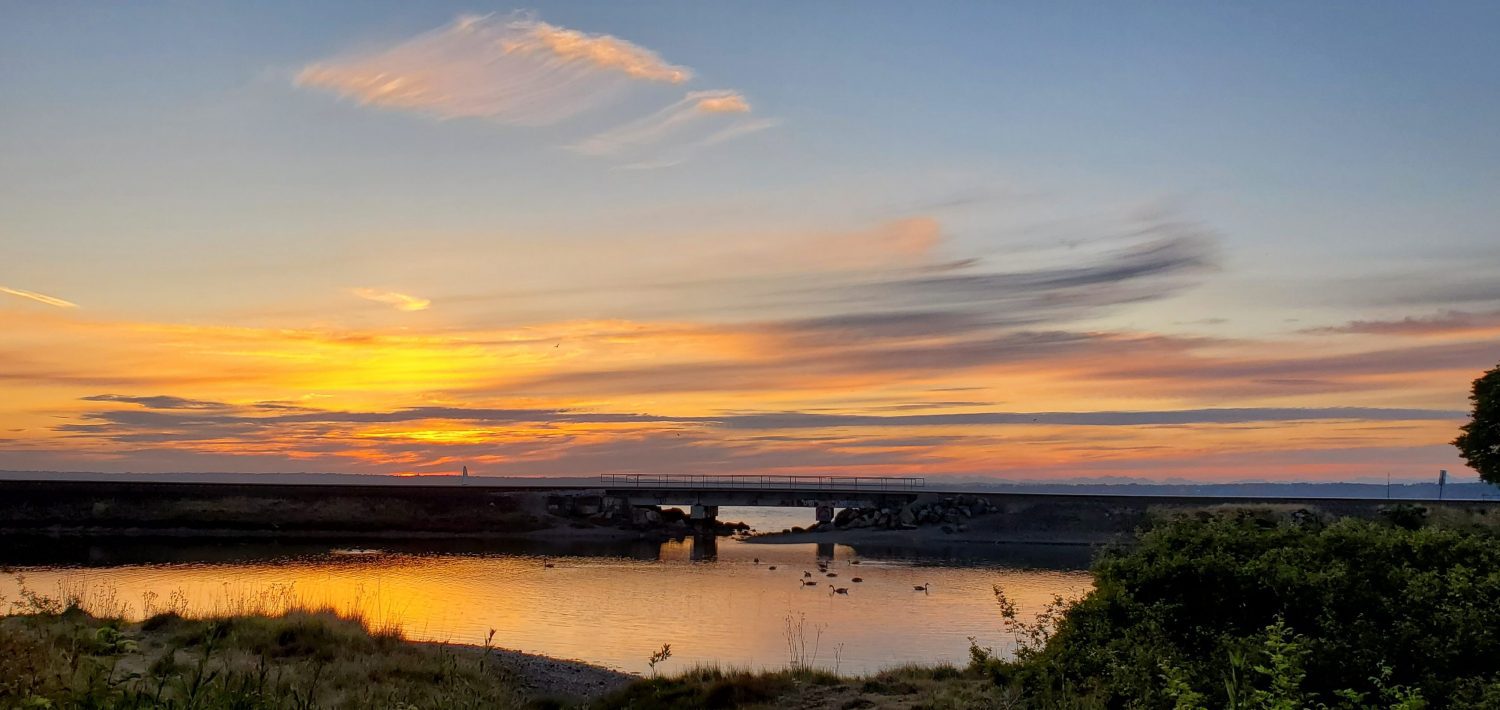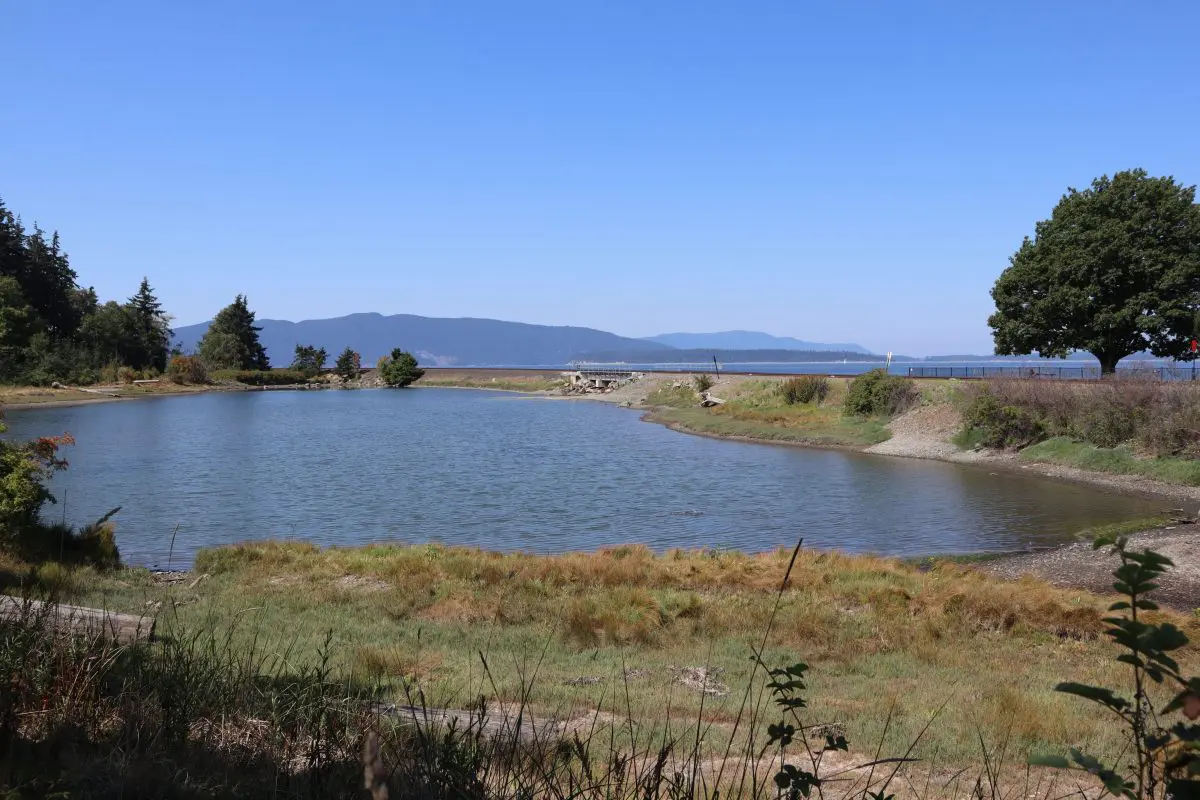Post Point Lagoon is one of only seven pocket estuaries in Bellingham Bay. The ecological importance of estuarine habitat and its scarcity locally is widely recognized. Pocket estuaries provide important habitat features including eelgrass beds, saltwater marsh with pickleweed (PDF) overhanging terrestrial vegetation, large woody debris, and the connection to other productive nearshore habitats.
Lagoon Habitat
Post Point Lagoon provides current and potential habitat for three species listed under the federal Endangered Species Act (Chinook salmon, bull trout, steelhead), and for the recently de-listed Bald Eagle. It is designated as Critical Habitat for Chinook salmon and bull trout by NOAA Fisheries and the U.S. Fish and Wildlife Service. The Post Point Lagoon is also important foraging habitat for Great Blue Herons associated with the Post Point Heron Colony. The Great Blue Heron is a state Priority species.

Lagoon Restoration
Post Point Lagoon has been the focus of restoration efforts since 2004. In 2007, the City increased capacity of the alternate outfall for the Post Point Pollution Control Plant to allow proper plant operation during high flows. Replacing the outfall pipe impacted a healthy, well-established bed of marine eelgrass. To mitigate the impact, some of the eelgrass was transplanted to the Post Point Lagoon.
In 2008, restoration work was completed to improve the shoreline riparian corridor, upper intertidal salt marsh, and intertidal mud flat. This project benefited eelgrass beds by combining to form a complex interacting mosaic of marine habitats that provide critical rearing and refuge functions for migrating juvenile fish and wildlife. Elements of this project include: placing large woody debris within and around the lagoon; removing fill from the shoreline, increasing shoreline length by 18% and saltmarsh area by 70%; re-establishing a native marine riparian buffer along the shoreline; protecting native vegetation and habitat elements by restricting access to sections of the upland, shoreline and intertidal zones; and installing educational signs.

Lagoon Monitoring
The City of Bellingham monitored fecal coliform bacteria levels in the Post Point Lagoon during 2000-2001, 2005, and on a monthly basis since 2008.
Fecal coliform bacteria are used as an indicator of bacterial levels in surface waters because they are easily quantified. Sources of fecal contamination to surface waters include domestic and wild animal feces, human feces, on-site septic system leaks, and stormwater runoff. Although they are generally not harmful themselves, fecal coliform bacteria indicate the possible presence of pathogenic bacteria, viruses, and protozoans that also live in human and animal digestive systems. In addition to the possible human health risk associated with the presence of elevated levels of fecal bacteria, they can also cause cloudy water, unpleasant odors, and increased oxygen demand.
Washington State bacteria level criteria are based on the anticipated level of recreational use and shellfish harvest and are measured as a geometric mean value of all samples. The geometric mean measure of fecal coliform determined to be safe for the harvest of shellfish as well as for primary recreational activities (i.e. swimming) in marine waters is 14 colonies (cfu)/100 ml (WAC 173-201A-210).
Late summer and early fall peaks in fecal coliform bacteria levels, such as those seen in 2000 and 2005, are likely associated with rainfall events following dry periods. These wet weather events flush fecal coliform bacteria into stormwater systems and streams. The magnitude of these peak levels has been greatly reduced since monitoring began in 2008. Overall bacteria levels have also been lower.
The reduction in bacteria levels could be considered an early success for the restoration of the Post Point Lagoon. Native plants and partial fencing installed in 2004, as well as a dog exclusion fence installed in 2008 have helped to reduce the amount of fecal coliform bacteria inputs in the nearshore vicinity. The use of dog waste bags and disposal bins by conscientious dog owners has also been key to reducing fecal coliform inputs.
Estuary Video
Learn more about the importance of local estuaries in the video below.
Resources
Wildlife Habitat Assessment
City Restoration Sites Map
Lake Whatcom Restoration Sites Map
Washington Conservation Corps (WCC) Crews
Stream Sense Brochure
Invasive and Noxious Weeds
Water Quality
Public Works Contacts
Post Point Heron Colony
